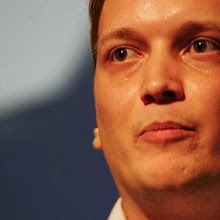Spread the "Epidemic"
The following article of mine was published in Vreme magazine on June 3rd 2000, four months before Milosevic stepped down.
Change is necessary in Serbia; not only a change of the current regime, but a thorough change of the political system. Fundamental change will follow the removal of ruling political parties, which can only be seen as the obstacles in the way of change. So far, the regular activities of the opposition political parties have proved to be insufficient to reach this goal.
Political parties are organizations which, in order to function at their full capacity, require a stable political system. In order to initiate public debates about questions of interest to the society, they need access to the media as well as cooperation with influential institutions. It is hardly necessary to repeat that these conditions do not exist in Serbia.
For this reason, as it has been pointed out before, there is a need both to establish a common consensus regarding the questions of systematic change and to engage all levels of society in a movement based on consensus. Unfortunately, after long and strenuous debates, all attempts to reach a consensus have so far reached a dead-end.
There is, however, another way to organize individuals and groups - within the framework of a social movement. It is first necessary to highlight a broad, yet sufficiently clear, demand for change in the existing system and, in time, encourage all of society's participants to take a stand regarding the political situation. This request would be represented by a line that would be drawn through all layers of the society. Every institution and all political parties, even those in power, would be asked to decide on which side of the line they wanted to be.
Therefore the key to replacing the regime in Serbia is primarily tied to the awakening and reviving of the people, because their passive participation in politics is no longer sufficient. In the torpid quagmire of the Serbian political system Otpor! falls like a massive rock, causing waves that spread in concentric circles.Therefore, it is not enough to support such a movement; one ought to join and work within it to make change possible. The lack of leaders and organizational hierarchy in such a movement enables individuals, on principles of personal initiative and responsibility, to contribute to the cause at their maximum capacity. Every single example of personal resistance blends into universal resistance, which again gives power to each individual act. The wearing of a badge with a clenched fist distinguishes an individual from the passive crowd, and meeting others with the same symbol gives power to the distinction.(Otpor!'s Manifesto, pg. 13)
But let's return to the drawing of a line as a generator of a social movement. In order for the undertaking to succeed it is necessary to keep attention away from the individual by emphasizing the group. This makes it impossible for the regime to manipulate the undertaking. Namely, if the movement were based on individuals, i.e. the leaders of the movement, the movement itself would be severely threatened. Individuals can be bribed, blackmailed, threatened, discredited and, as a last resort, murdered, while the ideological arena is a slippery battlefield for the regime. Therefore, one should not be guided by this or that politician, but rather by a desire to live in a normal country. The model of a spontaneous spreading of the idea makes it possible to draw a line through society even if regular political activity is not possible. This line even tears at the regime itself.
To extinguish this epidemic, the regime has to resort to violence. But that creates a counter-effect. Instead of smothering the epidemic, the regime is only expediting it. It is only a matter of time before this epidemic reaches the dictator's immediate surrounding. Institutions will chose between the two sides of the dividing line due to the circumstances with which they are faced. The arrests of innocents in Pozarevac was the circumstance that pushed the local court. Other examples will follow.
As a last resort, a panicked order to shoot at peaceful demonstrators is the circumstance that will eat at the army and police, and the regime knows that. In the end, the only one who can not position himself on either side of the line is the dictator himself. He is the one who is on the wrong side of the line from the start. For all of this to happen, it is first necessary to draw this line in circles that are not so close to the pinnacles of power; people should be asked to align themselves, to join, and not just support, so that the movement can grow and gain in strength and numbers. The process is perhaps slow, but unrelenting, and most importantly guarantees a peaceful solution to the political crisis. The line is here. Decide for yourself


0 Comments:
Post a Comment
<< Home